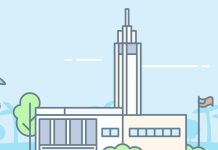Last week, there was a dramatic correction in the price of many commodities. The most significant was silver, which dropped an astounding 27% in one week. This drop was after a strong rally, which saw silver rise approximately 165% since last August, compared to a 30% rise in gold over the same period.
As of May 9, silver is rebounding, up 5%. Clearly, it is one volatile commodity.
Both stock and commodity markets have been strong since last August, when the Federal Reserve (Fed) embarked on its program to buy government securities, which is called quantitative easing. The Fed undertook the move to further stimulate the economy because of the subpar nature of the recovery thus far. This move by the Fed was intended to counteract fears of deflation, but has instead rekindled inflation in commodities, with the price of gasoline being a prime example.
The obvious question regards why silver has become even more volatile relative to other commodities? The best way to look at silver is to compare it to gold. While both holdings are considered inflation hedges, gold is more of a store of value and is held by many governments through their central banks. Silver has more industrial uses than gold and tends to do better when the economy is expanding. In addition, silver is a smaller market than gold, thus, it is more volatile and also has a high preponderance of individual investors.
There were several reasons for the fall in commodities and rout in silver last week. The U.S. dollar strengthened for the first time in a considerable period last week, as the European Central Bank gave an indication that rate increases would likely be slower than originally anticipated. The Chicago Mercantile Exchange twice raised margin requirements on silver last week in an attempt to dampen speculation, as trading activity was reaching record levels.
What has taken place in the silver market is akin to Internet stocks during the late 1990s. Many traders started jumping in because prices were going up, without any real understanding of the fundamentals involved. Certainly, some rise in the price of silver was justified, given the weak U.S. dollar and stronger industrial demand, but not the 165% increase since last August.
Unless someone is an unusually skilled trader, it is probably best to stay away from investing in the silver market given its high volatility. Some exposure to commodities is reasonable, but that can also be achieved by investing in natural resource-related stocks, such as oil companies. Once again, try to maintain a well-diversified portfolio.













